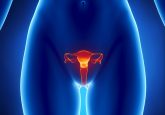Robert MacNeill: Why small lipids can seem more daunting than many biologics

In this installment of Robert MacNeill’s (Envigo) column, Robert discusses methodologies for small lipids, and why these can be a particularly challenging area of biologics.
Robert MacNeill received his Bachelor’s degree with Honors in Chemistry from Heriot Watt University then his MSc in Analytical Chemistry from the University of Huddersfield, both in the United Kingdom. Robert is also a Chartered Chemist and a Fellow of the Royal Society of Chemistry. With 20 years of experience in all aspects of quantitative bioanalytical LC–MS/MS method development, 11 of these years heading method development activities within HLS/Envigo, and a regular author and peer reviewer for the journal Bioanalysis, Robert is a recognized expert and innovator in the field.
It is fair to state that everyone in the bioanalytical arena is aware of the growing presence of biologics as therapeutic candidates, and small molecules having a slowly diminishing presence but nonetheless a presence that, for various reasons, will never disappear. At this stage of my career I can look back on successes, innovative moments and continual learning experiences, but also an assortment of trials and tribulations when it comes to small molecule quantitative bioanalysis. At the same time, there is a perceptible air of wariness in the industry when it comes to the bioanalysis of biologics by LC–MS, without even delving beyond the realm of a few thousand Daltons molecular weight. It therefore strikes me as a little strange that, at least as far as peptides or oligonucleotides are concerned, I have of late seen more success and made more sense of bioanalytical challenges involving these drug candidates than the small molecule portion of the regular workload.
Small molecule drugs may possess the full complement of physicochemical properties, that is to say they can, fundamentally, have practically any degree of lipophilicity and of course may possess any ionizable moiety, with all associated acidic or basic strengths. At least their very definition bestows a size limitation and a limit to the degree of any multiple charging that could occur. In any given case, issues could arise from a multitude of sources. There could be difficulty with solubilization in certain solvent media, and related phenomena like nonspecific adsorption to container surfaces. Ionization may be very difficult too, as may ensuring complete neutralization in mobile phase if this is required for most efficient ultimate gas phase ion production in-source. At least in part due to this, adequate sensitivity may be very hard to come by. There may be various manifestations of instability. Additionally, and by no means least, there could very well be matrix effect. To probe a little further into the nature of matrix effect, it is mostly down to endogenous lipids, like phospholipids, in the biological matrices being analyzed. Lipids that are not fully expelled during sample extraction since the vast majority of extraction techniques favor good recovery of hydrophobic compounds. These lipophilic interferences affect the magnitude and precision of analyte peaks when simultaneously present with them in-source, be it as a result of simple coelution or bleed from accumulation on-column after previous injections.
This article is part of Robert MacNeill’s (Envigo) quarterly column for Bioanalysis Zone which focuses on quantitative method design. You can read past installments of the column here.
Key to the point I am trying to make here, following the above premise, is that methodologies for the most lipophilic small molecules can sometimes be the toughest of challenges, to the extent that isotopologues as internal standards are the only approach to a guarantee of quantitative data reliability. Besides other factors in the overall challenge, such as inefficient product ion formation for the likes of steroids, the reasons are largely down to the coextracted interferences, themselves lipids, exercising matrix effect. These are inescapably reversed-phase methods, and lipids are synonymous with carry-over, originating both on-column and within autosampler plumbing. Their presence is very difficult to minimize, let alone eliminate. They will be present within the elution windows of any gradient cycle, and without reproducibility. Polar analytes, on the other hand, tend to present a different scenario. They are much easier to eliminate in the carryover context, and optimized methods for polar compounds tend to give selectivity for interferent lipids in an innate, almost intuitive fashion, as a direct result of operative chemistry.
It may seem weird on the surface but polar analytes I have grown to see as friends, and this includes peptides and oligonucleotides. For this, my group has spent many years embracing hydrophilic-interaction liquid chromatography (HILIC), even in the context of solid-phase extraction. The anticipation of less sensitivity compared to more hydrophobic compounds is a reality because of the way in which electrospray-based gas phase ion release works. However, this can be more than offset with very high-acetonitrile HILIC mobile phases, as opposed to fitting the polar compound into chromatographic acceptability within a reversed-phase format, inevitably at much higher aqueous hence not conducive to best sensitivity. Also, to their analytical credit, if you will, it is also of interest to note that peptidic and oligonucleotide backbones have ordered, somewhat predictable chemistries, whereas small molecules have ‘carte blanche’ for their structure and functionalities.
As bioanalysts we do love lipophilicity, as we have been conditioned as such, and of course there is good reason. This property does great things, like propel a solvated ion to a droplet surface as part of its journey towards release into the gas phase, and it allows all the priceless reversed-phase manifestations we work with on a daily basis both in sample preparation and chromatography. We are even forever at the ready to confer hydrophobicity on polar analytes with ion-pairing. Yet, we should not be wary of putting our hands into the polar toolbox. Unadulterated polar analysis can be something to behold in performance and, particularly once any nuances are understood, simplicity. That’s why, even though I enjoy quantitative LC–MS of both, I often think I feel better about the prospect of polar analytes than I do about lipophilic analytes.
Our expert opinion collection provides you with in-depth articles written by authors from across the field of bioanalysis. Our expert opinions are perfect for those wanting a comprehensive, written review of a topic or looking for perspective pieces from our regular contributors.
See an article that catches your eye? Read any of our articles below for free.






